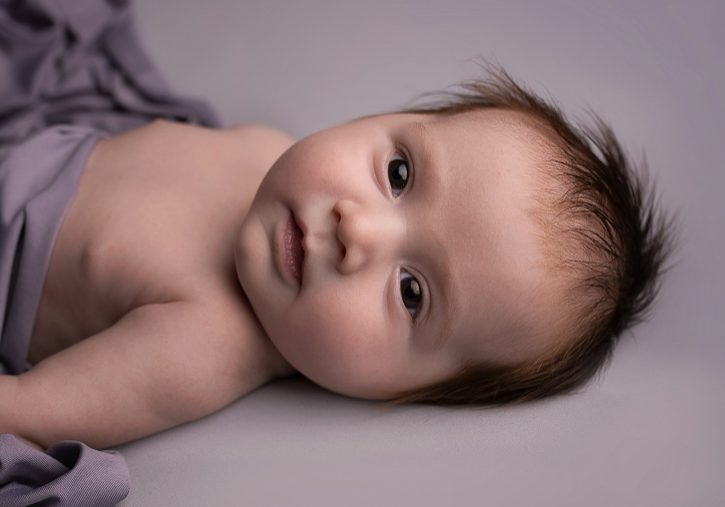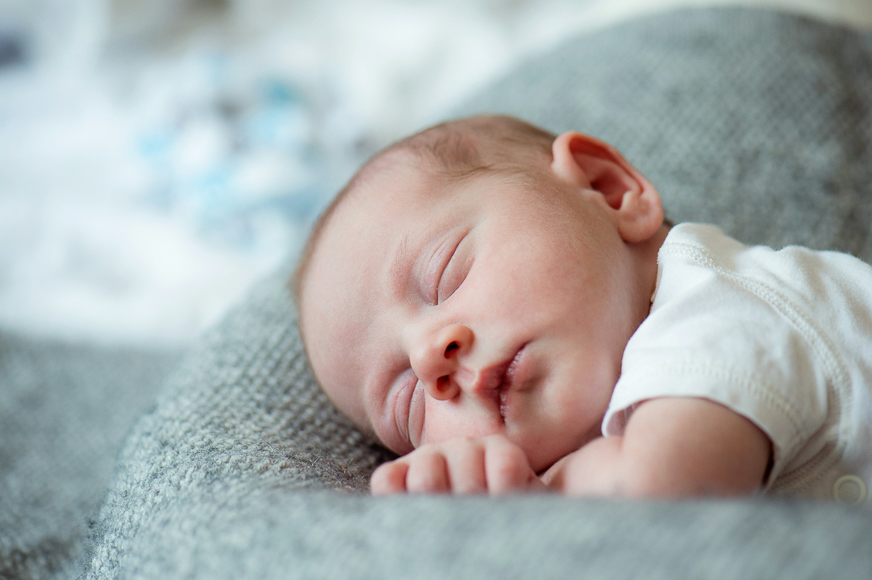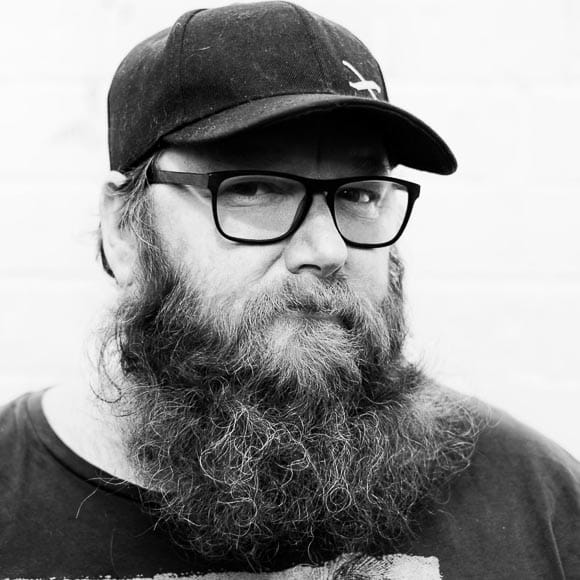
How to Choose the Best Lenses for Newborn Photography
In this essential guide, we’ll discover how to choose the best lenses for newborn photography and offer our top picks from various brands.
Shotkit may earn a commission on affiliate links. Learn more.
In this essential guide, we’ll discover how to choose the best lenses for newborn photography and why they make all the difference!
Newborn photography is still booming; after all, people keep having babies! But mastering newborn photography and making your images stand out from the crowd takes more than luck or a keen eye.
Tackling any competitive photography or videography genre always comes down to having the best gear for the job.
In baby, infant, and newborn photography, capturing milestones, moments, and every goo-goo and gaa-gaa demands the best lenses for the job.
The right lens can make the difference between dull, flat baby photos and pro-grade shots with depth, light, color, and character.
Let’s unswaddle this topic, dust it with baby powder, and learn all there is to know about newborn baby photography lenses.
How to Choose the Best Newborn Photography Lens
As with any photography or videography genre, newborn photography works best when specific lenses are employed.
While capturing newborn images with any available lens is always possible, getting the best image quality and compositional appeal requires a little more thought and gear selection.
In a nutshell, newborn photography is much the same as portrait photography, but with tiny humans instead of full-grown ones.
As a result, you’ll need lenses with a suitable focal length and fast aperture to create depth of field, low light performance, and dreamy background blur.
What Focal Length to Use for Newborn Photography

When selecting the best lenses for your newborn photography kit, keep a few things in mind.
First, you must consider the best focal length for capturing newborns. Identifying the kinds of focal lenses that won’t work with this genre is probably easier.
For instance, ultra-wide-angle lenses tend to distort subjects when photographed up close. In portraits, especially baby shots, an ultra-wide lens will result in distorted views and features, especially the shape of the head.
Telephoto and supertelephoto lenses offer tight compression but require you to stand too far away from the child to create an effective and appealing composition.
The Goldilocks of newborn photography lenses is a standard 50mm full-frame (or 50mm full-frame equivalent).
A 50mm lens grants a natural field of view similar to the human eye. Furthermore, it provides a suitable level of image compression without cropping out needed background or foreground elements.
Beyond the fast 50mm full-frame lens, you can work with a slightly wider 35mm lens for greater compositional leverage, or a tighter 70mm or 85mm lens for greater facial detail and expression.
Prime vs. Zoom

The prime versus zoom debate is an age-old squabble about the pros and cons of fixed-focal-length prime lenses and multi-focal-distance zoom lenses.
Many photographers prefer prime lenses for their optical purity, image sharpness, and typically faster maximum apertures. The flip side of that is the photographers who swear by zoom lenses for their flexibility and adaptability in various applications.
Selecting a prime or a zoom for newborn photography depends on personal preference, budget, and appeal.
While you can buy a bag of fast primes, including a 35mm f/1.4, 50mm f/1.4, and 85mm f/1.4, purchasing a single 28-70mm f/2 is also possible and arguably cheaper.
The key to the best prime or zoom lens is image sharpness, and, most importantly, the maximum aperture. More on that in a moment.
Aperture

Probably the most important element of any lens for newborn photography is the maximum aperture.
While a prime or zoom lens with an f/4 aperture can capture sharp images, they lack depth and character. Like portrait photography, newborn photography demands a lens with a fast max aperture like f/1.2, f/1.4, or f/1.8. An f/2 lens will also work, but not as well.
With a fast f/1.2-f/2 aperture, you’re assured stronger image sharpness in the center of the frame and a pleasing focus fall-off of background elements.
The wider the aperture, the stronger the depth of the field and the greater the background blur and bokeh. As a result, facial features such as the eyes and mouth will be ultra-sharp with focus fall-off starting at the ears and beyond.
Depending on the lighting conditions, a faster f/1.2-f/2 maximum aperture ensures optimal light intake. Given that most newborn photo shoots take place in a studio or the family home, the lighting conditions are never guaranteed.
My Favorite Lenses for Newborn Photography
With all the leading first-party (brands like Canon, Nikon, Fujifilm, and Sony) and third-party (brands like Sigma, Tamron, and Panasonic) lens brands on the market, choosing the best lens can be tricky.
If you’re looking to photograph your newborn baby (congratulations, by the way) or you want to pursue the genre as a career, you’ll need the best of the best.
To make the selection process easier, I’ve listed a handful of the best lenses for the job, plus a bunch of excellent alternatives for most brands and camera mounts.
50mm f/1.4 (Best Overall)

- Natural view similar to the human eye
- Excellent for fine details
- Fast and bright max aperture
- Relatively compact compared to f/1.2
- Too tight for wider family shots
- f/1.2 offers superior outcomes
As mentioned, a fast and bright 50mm full-frame prime is the ultimate newborn photography lens.
One with a fast f/1.4 maximum aperture hits the sweet spot by delivering better bokeh than the f/1.8 lenses (in general), yet it’s not as large, bulky, or expensive as the f/1.2 lenses.
Fast prime f/1.2 lenses offer superior subject sharpness, sublime background blur, and dreamy bokeh. However, most f/1.2 prime lenses are big and bulky due to the next-level lens assembly required to deliver impressive outcomes.
Sony, Canon, and Nikon offer multiple first-party 50mm full-frame lenses, including f/1.4 models ideal for this genre.

Alternatively, if you’re looking for a premium third-party offering, the Sigma 50mm f/1.4 DG DN Art Series lens is a fantastic option for Sony E, Nikon F, Canon EF, and Leica L.
While lightning-fast focus speed or image stabilization aren’t always essential for newborn photography, if your lens of choice includes either of these features, it’s a bonus!
APS-C Shooters should use the 35mm f/1.4 (see below), which is around 52mm on most APS-C cameras. (Fuji and MFT are also covered below.)
Native lens options:
Nikon Z [Amazon | B&H] | Canon RF [Amazon | B&H] | Nikon FX [Amazon | B&H] | Canon EF [Amazon | B&H] | Sony FE [Amazon | B&H] | Sigma [Amazon | B&H]
50mm f/1.8 (Best Budget Prime Lens for Newborn Photography)

Credit: Andy Day
- Compact and lighter than f/1.4 or f/1.2
- Highly affordable options
- Excellent image sharpness
- Pleasing background blur
- Less effective low-light outcomes
- Reduced build quality
- Less likely to feature image stabilization
If you’re looking for a budget-friendly alternative to a bright f/1.2 or f/1.4 prime lens, plenty of quality 50mm f/1.8 models are available from first and third-party brands.
Putting aside the cheaper asking price, f/1.8 lenses are typically smaller and more compact than their premium siblings. Weight-saving materials such as plastic are heavily used, but the internal lens assemblies are still great and capture sharp and bright images.
With a narrower maximum aperture, an f/1.8 lens still produces a pleasing depth of field, but nowhere near the paper-edge depth an f/1.2 captures.

An excellent example of a budget-friendly nifty-fifty for Sony full-frame cameras is the Sony FE 50mm f/1.8. It ticks all the boxes for image quality, low-light performance, size, weight, and budget.
Check out our full review of it here.
The same goes for the Nikon NIKKOR Z 50mm f/1.8 S and the Canon RF 50mm f/1.8 STM lenses. The Canon is arguably one of the best beginner-friendly full-frame prime lenses on the market.
Native lens options:
Nikon Z [Amazon | B&H] Nikon FX [Amazon | B&H] | Nikon DX [Amazon | B&H] | Canon EF [Amazon | B&H] | Canon APS-C [Amazon | B&H] | Canon RF [Amazon | B&H] | Sony FE [Amazon | B&H] | Sony APS-C [Amazon | B&H] | Fujifilm [Amazon | B&H] | Micro Four-Thirds [Amazon | B&H]
35mm f/1.4

- Wider field of view
- Greater compositional options
- Fast and bright max aperture
- Excellent background blur and bokeh
- Heavy and bulky
- Expensive compared to f/1.8 lenses
While a full-frame 50mm prime lens (or full-frame equivalent cropped lens) is an ideal solution for newborn photography, sometimes you need something a little wider.
A 50mm full-frame lens is excellent for capturing facial details (or feet, fingers, hands, and toes) and torso/head shots.
However, a 35mm full-frame prime opens up the field of view and offers greater freedom for compositional elements such as foregrounds, backgrounds, and staging.

Again, f/1.4 hits the sweet spot between f/1.2 (which is big and expensive, and the extra speed is not really needed) and f/1.8 (which is usually not as high-quality as the f/1.4 and f/1.2 lenses).
The Sigma 35mm f/1.4 [Amazon | B&H] is a fantastic full-frame prime lens option for Sony E, Nikon F, Canon EF, and Leica L. If you’re looking for a 35mm full-frame equivalent for an APS-C cropped-sensor camera, look for 24mm instead.
However, the Sigma lens is bulky and weighs 22.6 oz (640g). If the 35mm f/1.4 is too heavy or expensive, you can switch to the f/1.8, which is lighter and more compact.
Native lens options:
Nikon Z [B&H] Nikon FX [Amazon | B&H] | Nikon DX [Amazon | B&H] | Canon EF [Amazon | B&H] | Canon APS-C [Amazon | B&H] | Canon RF [B&H] | Sony FE [Amazon | B&H] | Sony APS-C [Amazon | B&H] | Fujifilm [Amazon | B&H] | Micro Four-Thirds [Amazon | B&H]
24-70mm f/2.8

Credit: Marc Bergreen
- Flexible all-purpose zoom range
- Most feature image stabilization
- Cheaper than multiple fast primes
- Reduced low-light performance
- Bulky and heavy
A full-frame (or equivalent) full-frame zoom lens is probably the most common lens purchase amongst beginners, enthusiasts, and professional photographers.
A 24-70mm standard zoom lens is often the go-to kit lens option and, depending on the quality and performance, is a pro-grade workhorse designed to meet the needs of countless genres.
Almost all brands offer such a zoom lens, but the Sigma version (full review here) offers the best value while delivering excellent image outcomes.
If you’re ok with a little less on the wide end (newborn photography rarely requires a wide focal distance), the Tamron 28-75mm f/2.8 G2 [Amazon | B&H] and the Sigma 28-70mm f/2.8 [Amazon | B&H] are both excellent lenses at great prices.
(The price of the Tamron for Sony right now is fantastic, although personally, I prefer the Sigma – the shots come out less clinical. I actually really love my Sigma 28-70mm.)

While an f/2.8 aperture is good, it’s not nearly as bright as an f/1.4, so you must consider on- or off-camera lighting to deliver additional light. Alternatively, pair the lens with a camera body that has IBIS (In Body Image Stabilization).
If you prefer a native lens for Canon, Nikon, or Sony, you can choose from the links below. (APS-C equivalents provided.)
The beauty of a 24-70mm f/2.8 (or similar focal range) lens is that it can be used in a wide range of genres and applications.
Native lens options:
Nikon FX [Amazon | B&H] | Nikon DX [Amazon | B&H] | Canon EF [Amazon | B&H] | Canon APS-C [Amazon | B&H] | Canon RF [Amazon | B&H] | Sony FE [Amazon | B&H] | Sony E [Amazon | B&H] | Fujifilm [Amazon | B&H] | Micro Four-Thirds [Amazon | B&H]
Fujifilm XF 35mm f/1.4 R (Best Fujifilm Lens for Newborn Photography)

- Ideal for Fujifilm X Mount cameas
- Incredibly light and compact
- Fast maximum aperture
- Excellent background blur
- Older Fuji lens option
- Slow focus performance
Fujifilm has been a leading film, optics, lens, and camera brand for over 90 years. Many photographers, from beginners to professionals, shoot with Fujifilm X Mount digital mirrorless cameras and lenses.
The Fujifilm XF 35mm f/1.4 is one of the first X Mount native Fujifilm lenses developed for the Fujifilm X-Pro1.
Despite its age and slower autofocus performance, it’s regarded as one of the sharpest APS-C prime lenses for the X system. Its lens assembly delivers excellent centre sharpness and background blur at f/1.4 with a minimal focus distance of 11.02″ (28cm).
At 35mm (APS-C), it delivers a 53mm full-frame equivalent focal range and field of view on par with 50mm full-frame lenses.
As a result, the Fuji 35mm f/1.4 is ideal for newborn photography as it’s compact, lightweight, fast, and offers excellent low-light performance.

The Fujifilm XF 33mm f/1.4 R LM WR is a great, current-generation alternative. It offers faster autofocus, weather-resistance, and a true 50mm full-frame equivalent.
If you’re looking for the versatility of a zoom, the Fujifilm XF 16-55mm f/2.8 [Amazon | B&H] is a great option.
Panasonic Leica 25mm f/1.4 (Best MFT Lens for Newborn Photography)

- Lightweight and compact
- Fast and bright max aperture
- Weather sealed
- Impressive image quality
- Soap-bubble bokeh
Like Fujifilm, Panasonic and Leica are household brand names known throughout the industry for their tenure and exceptional product offerings.
Anyone shooting newborn photography with a Micro Four Thirds (MFT) cropped sensor digital camera should check out the Panasonic Leica DG Summilux 25mm f/1.4 II ASPH.
The Leica DG 25mm f/1.4 II delivers a true 50mm full-frame equivalent focal distance with a natural field of view ideal for baby photography.

Despite its compact and lightweight design, the lens delivers excellent image clarity and sharpness while affording low-light shooting at f/1.4.
There’s little to say against the 25mm MFT lens other than that the background bokeh can result in a less pleasing soap bubble effect. Otherwise, it’s an excellent, cost-effective MFT choice.
If you’re shooting newborn photography with an MFT camera and prefer a zoom, the OM SYSTEM M.Zuiko Digital ED 12-40mm f/2.8 PRO II L (longest lens title in the world) [Amazon | B&H] is the top choice.
FAQs About Lenses for Newborn Photography
A 50mm full-frame prime lens is better for newborn photography as it delivers a compressed yet natural field of view. A fast 50mm lens (or full-frame equivalent) offers excellent centre sharpness and appealing background blur.
Is f/1.8 fast enough for newborn photography?
Yes, f/1.8 is fast enough for newborn photography, even indoors. It offers a wide enough aperture, provided you can shoot at slower shutter speeds or introduce additional lighting.
Do I need a macro lens for newborn photography?
While you don’t need a macro lens for newborn photography, its close-up 1:1 capture of details such as a baby’s eyelashes, fingernails, and first teeth is second-to-none.
Do I need image stabilization when photographing newborns?
Image stabilization is a luxury not required for newborn photography – plus it elevates the price of most lenses. However, image stabilization is beneficial when shooting in low-light conditions where a slower shutter speed is required. The same applies to every other genre of photography.






